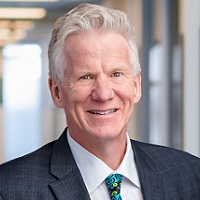 By Nick van Terheyden aka Dr Nick, Principal, ECG Management Consulting
By Nick van Terheyden aka Dr Nick, Principal, ECG Management Consulting
Twitter: @drnic1
Host of Healthcare Upside Down – #HCupsidedown
May is Mental Health Awareness Month, and on this episode we are talking about behavioral health in our society and the challenges that so many face with anxiety, depression, and suicide.
Before we start: anyone who is feeling a sense of loneliness, suffering from depression, or having thoughts of suicide—please call 988. This is a crisis lifeline with trained counselors available 24/7 through phone, text, and online chat. Remember 988 when you or a friend are in need.
Episode NOW on Demand
We have talked about brain health on this show before, and specifically about destigmatizing the notion of mental disorders and the importance of treating them like any other disease. We still don’t fully understand the underlying causes, but we know they can strike anyone, just like other diseases do.
Suicide, in particular, is a tragic endpoint for some who are suffering and struggling to find a way through. We saw a steady rise in the incidence of suicide during the pandemic, and it appears to be on the rise again.
We need to ensure that anyone who is suffering from a mental disorder and is considering harming themselves gets immediate help and ongoing care. But our system struggles to deliver timely support, and many find it difficult to find resources that are available without months-long waits—waits that can be life-threatening.
Dr. Mimi Winsberg is a psychiatrist, author, and chief medical officer at Brightside Health. She joins me on this episode to talk about the ways that technology is helping us deliver behavioral health care to rural and underserved communities—and importantly, reducing suicidal ideation. Below are a few excerpts.
Supply not matching demand.
“There is an access issue. We have a national shortage of psychiatrists, in addition to other mental health care professionals. But there are also specific access issues in rural areas, for instance, and among certain populations, so social determinants of health come into play here. The zip code that you live in is important. Telemedicine is well poised to address some of these access issues. And access is just the first step in providing care for people. We want not just to provide care, but to provide high-quality care and in a timely fashion.”
Making healthcare more efficient.
“Technology-enabled service can optimize how efficient a provider can be or the number of patients they can have in their panel. If we can do things like remote patient monitoring—knowing how patients are doing in between appointments—that might reduce the number of appointments a particular patient would need, or make the appointments more timely and efficient. Also, measurement-based care can keep us more accountable to the care we’re delivering and thus make the whole system more efficient. We can use tech to our advantage.”
Understanding the benefits and limitations of technology.
“Technology can be used for good or for bad [purposes], and more time on social media may not be good for one’s mental health. But deploying key strategies in treating mental health conditions over technology can be useful. For instance, one of the things we saw at Brightside was that we were able to significantly reduce suicidal ideation in a very large cohort of patients. We found that those who elected to receive care had a 4.3 times reduction in suicidal ideation. So using technology in this fashion to deliver quality care is a real bonus. But just using technology for the sake of it may not be that helpful.”
This article was originally published on the ECG Management Consulting blog and is republished here with permission.
About the Show
The US spends more on healthcare per capita than any other country on the planet. So why don’t we have superior outcomes? Why haven’t the principles of capitalism prevailed? And why do American consumers have so much trouble accessing and paying for healthcare? Dive into these and other issues on Healthcare Upside/Down with ECG principal Dr. Nick van Terheyden and guest panelists as they discuss the upsides and downsides of healthcare in the US, and how to make the system work for everyone.
Tune in weekdays at 9am, 5pm, and 1am ET.
Join the conversation on Twitter at #HCupsidedown.
